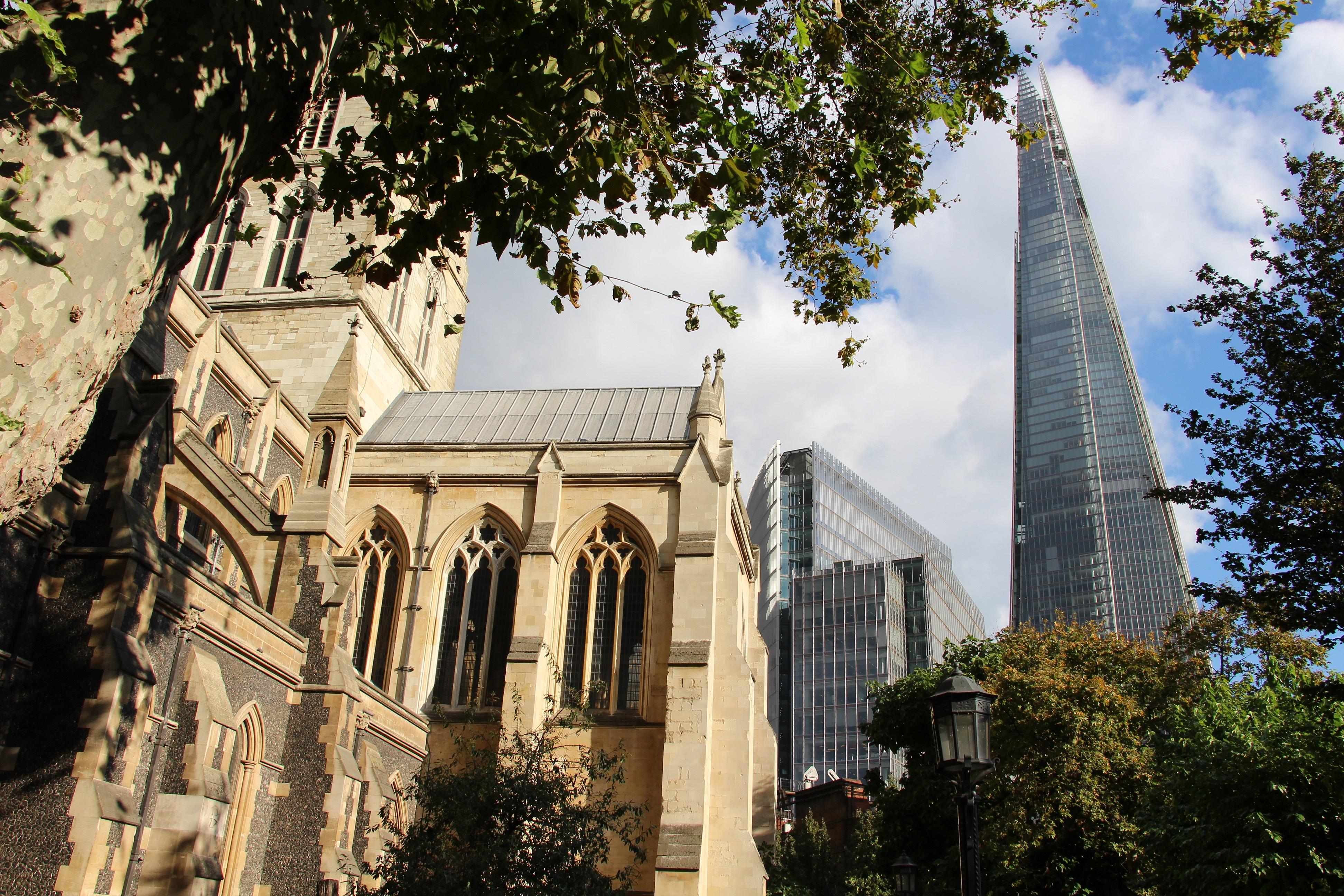St Magnus the Martyr
City of London, Greater London
The original church, founded in the early 12th century, was one of the first buildings to be destroyed by the Great Fire as it stood just 300m (1000ft) from Pudding Lane.

Southwark Cathedral, once a priory church, is (as in monastic days) a centre for a pattern of daily worship within the English cathedral music tradition: a centre of teaching, of worship, prayer and pilgrimage, open and inclusive to all.
Southwark, Greater London
In 1106 the church was refounded by two Norman knights as a priory, whose members lived according to the rule of St Augustine of Hippo. The church was dedicated to St Mary and later known as St Mary Overie (over the river). The Augustinian Canons created a hospital alongside the church; this was the direct predecessor of today's St Thomas's Hospital opposite the Houses of Parliament and originally named in honour of St Thomas Becket who was martyred at Canterbury in 1170. Perhaps the most famous resident of the priory was the court poet John Gower who lived there at the start of the 15th century. He was a friend of Chaucer who was famous for The Canterbury Tales which begins in Southwark. Gower died at the priory and left a large part of his money to St Mary Overie. His beautiful tomb can be found in the nave of the Cathedral. At the Dissolution of the Monasteries in 1539, the last six canons were pensioned off although they continued to live in buildings north of the church.
The church itself became the property of King Henry VIII who rented it to the congregation. It was renamed St Saviour's, though the old name remained in popular usage for many years. Tired of renting from the King, a group of merchants from the congregation, known as the Bargainers, bought the church from King James I in 1611 for £800. It was during this time that the church became the stage for many of those involved in the theatres of Shakespeare's day. Actors, dramatists and theatre workers such as Edmond Shakespeare (William's brother), John Fletcher and Philip Henslowe were all buried in the building. It was during this period, that Lancelot Andrewes became the only Bishop of Winchester to be buried in the Cathedral in 1626. He was involved with overseeing the translation of the King James Bible and his tomb can be found by the High Altar.
The church ministered to its parish throughout the 17th and 18th centuries and various repairs and alterations were made to the building. The state of the building became a real cause for concern in the 1820s. After much argument the decision was made to restore it and it was largely due to the architect George Gwilt that major parts of today's Cathedral are still standing. In the late 19th century it was proposed that a new diocese should be created and in anticipation for this a new nave was designed by Sir Arthur Blomfield in 1895. St Saviour became Southwark Cathedral in 1905. The diocese which it serves stretches from Kingston upon Thames in the west to Thamesmead in the east and Gatwick Airport in the south. It has a population of two and a half million people, served by over 300 parishes. In 2000, major extensions designed by Richard Griffiths were added north of the Cathedral; these provide meeting and conference rooms, a library, the Education Centre, the Shop and Refectory.
City of London, Greater London
The original church, founded in the early 12th century, was one of the first buildings to be destroyed by the Great Fire as it stood just 300m (1000ft) from Pudding Lane.
City of London, Greater London
You really will feel secluded in this gem of a City garden.
City of London, Greater London
When Wren rebuilt this 12th century church in 1681-86, he employed some of the greatest craftsmen of his age.